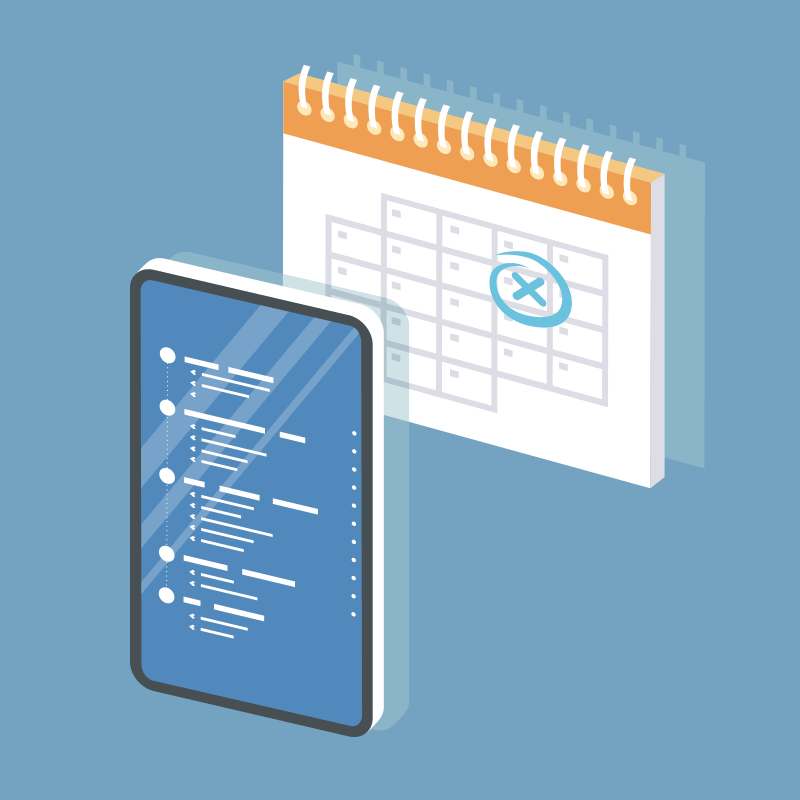How to Optimize Your Inspections Process with Smart Technology
Rental property inspection is the key to keeping your short-term rental property well-maintained and growing its value. When you streamline your rental property inspections, you not only prevent bigger damages in the future but also avoid longer vacancy periods. While managing multi-properties you need to know when to conduct inspections and how smart technology can help you standardize and automate inspection process, take real-time pictures, and store records which is accessible anytime
Types of Rental Property Inspection and When You Can Conduct These Inspections
To keep your property up-to-date, rental property inspection should be part of your regular maintenance. The rule of thumb is to conduct inspections every time, a guest moves in or when a guest moves out or perform periodic inspections every few months, annually, biannually or so.
Inspection records and reports like date of inspection, pictures, and condition of the property serve as the legal document in case something happens to the property. You can digitally store these inspection reports and maintenance files to access them from anywhere and anytime with the help of cloud-based property management software. Cloud corporate housing software like Zenya makes rental inspections easier for your team, vendors, and your guests with its mobile app. Based on your business needs you could save these inspection directly to unit or reservation.
Move-in Inspection
Move-in inspection is most important inspection and rates the condition of almost everything at the rental property. Every detail like walls, floor, appliances, windows, and light fixtures should be examined and recorded to avoid potential damage in the future. The best time to do a move-in inspection is when the guest gets the keys and signs the lease terms but before the guest moves with his belongings. It not only relieves your team but also ensures your guests that they won’t be responsible for any previous damage.
Move-out Inspection
It is equally important to conduct an inspection when the guest leaves the unit. Guests are liable to return the unit in the same condition when they moved in. Any damage beyond normal wear and tear gets deducted from the guest’s security deposits. For this, you can compare unit condition with move-in inspection notes and decide on what needs to be done to restore the property to rent-ready condition. A move-out inspection helps you skip any dispute on security deposit deduction.
Routine Inspection
The routine inspection goes hand and hand with routine maintenance. This inspection is driven towards ensuring the safety and security of guests. During a routine inspection, you can check for heating or cooling systems, overall cleanliness, and whether electrical wiring and fixtures are fully functional or not. It can be conducted on every 3 months or 6 months or on annual basis.
How to Optimize Rental Property Inspections Process with Modern Tools
Rental property inspection form an important part of property management. Being a property inspector is not a cakewalk when you have to do it manually.
Are you driving to an office just to collect a property inspection list, recording all damages and items by handwriting them on a piece of paper, and taking photos of damages? The inspection does not mean you need to carry a paper inspection checklist all the time and manually check the boxes.
You might lose a lot of productive time doing it, again and again, entering the notes in an excel sheet for records and downloading the photos, and organizing under each unit or building. You have to wait for the inspection report to be ready to get all the information. You can’t access the checklist in real-time. What if the owner or manager wants to refer to this report in the future? They have to manually search the files and photos on their computer and print copies.
And how do you remember the next inspection date?
Rental property inspection do not have to be that grueling when you optimize your inspection process with smart technology.
Modern tools help you streamline the process, saving you time while increasing transparency amongst the team and guests.
Cloud-based property management software like Zenya can streamline the rental property inspection process using an in-built mobile app. You can create workflows for inspection where the inspection checklist is sent to the team or maintenance vendors on a specific date or when defined triggers are met like a new reservation or move out. You can easily skip the inspection calendar and avoid missing out on any inspection. Your team or vendors can access this checklist form using the mobile app and record the current condition of the property in detail.
Zenya allows you to create a custom inspection checklist based on clients’ business needs. They can easily click pictures of the unit in real-time from the app that gets stored in software under the specific unit or building. No need to organize the checklist. It saves you enough time and increases transparency.
When you receive an inspection checklist, you can quickly review and ensure whether the property is up to brand standards or not.
Further, you can put the inspection task on autopilot with smart technology like Zenya. Zenya automatically creates a work order for your staff or vendors when a defined trigger is met like move-in, move out or defined time duration is met. The staff gets notified of property inspections with property details and downloads a digital checklist to take notes on.
Smart technology is crucial for streamlining the inspection process. It is a faster and smart way to conduct inspections, avert costly expenses and keep a track of your property’s condition. It is easier to keep your guest satisfied and staff stress-free.




Recent Comments